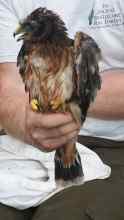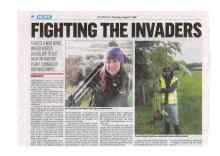HEN HARRIER PRODUCTIVITY AND NEST SUCCESS
A total of 39 sites were monitored across all regions as part of the satellite tagging projects with the highest fledging success rates in the Ballyhouras and the lowest in the Slieve Blooms. A high failure rate in the Blooms, with three pairs failing early in the season and predation proven or suspected in another four cases, contrasted with good nest success rates estimated for the Ballyhouras and Duhallow regions.
SATELLITE TAGGING IN 2016












